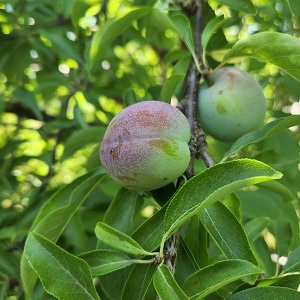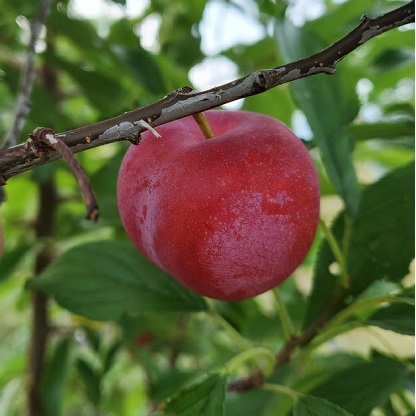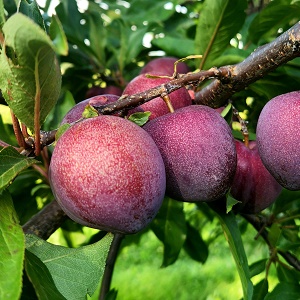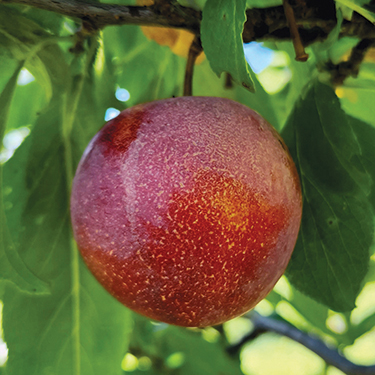American Hybrid Plum : FOFONOFF Semi-Dwarf (Mustang) (Orchard Grade)
$44.95
An 'orchard grade' is a tree that may be somewhat shorter, slightly crooked, or a bit scratched, or for some other reason is not a perfect front lawn specimen. These trees will work just as well in an orchard as a first or number one would, since they still produce the very same fruit.
Fofonoff can confidently be classed as one of the most cold-hardy plums in Canada. Rumored to be of Russian descent, it is named after Wasal Fofonoff of Buchanan, SK, who introduced it in 1973. It has, at times, also been sold as 'Homesteader'. At ripening time, the round, 4cm(1½"), lime green fruit develops a rosy red blush. With firm and very sweet, yellow-green, freestone flesh and thin, tender skin, it is a fine fresh eating plum. It is also a jam and preserves type of plum, rather than canning.
NEEDS A POLLENIZER | ZONE 2/3 | HARVEST : MID-LATE AUG.




